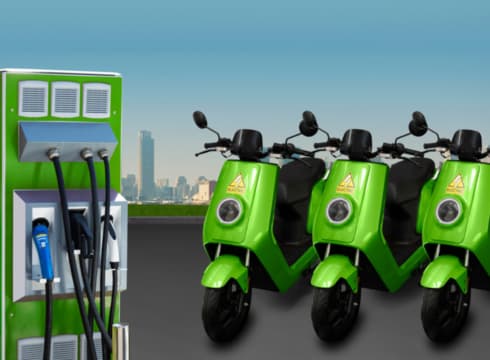Electric passenger vehicles could account for 10%-15% of new vehicle sales by 2030: McKinsey
Electrification expected to happen fastest in the two-wheelers and three-wheelers space due to shorter payback periods, the report said
India must target 100% electrification in the two-wheeler and three-wheeler segments in the next four years: Former Niti Aayog CEO Amitabh Kant
Inc42 Daily Brief
Stay Ahead With Daily News & Analysis on India’s Tech & Startup Economy
The contribution of electric vehicles (EVs) in new two-wheeler and three-wheeler vehicle sales will rise to 50% and 70%, respectively, by 2030 in India, global consultancy firm McKinsey & Company said in a report.
The report said that India will electrify swiftly but transition routes to it would vary across different vehicle types with electrification expected to happen fastest in the two-wheelers and three-wheelers space due to shorter payback periods.
On the other hand, the electrification of passenger vehicles and heavy commercial vehicles is expected to be more gradual. Electric passenger vehicles could account for 10%-15% of new vehicle sales by 2030, the report, released at the annual Automotive Component Manufacturers Association (ACMA) conference in New Delhi, said.
McKinsey also noted that a shift toward electrification would bring headwinds for component categories that are oriented towards traditional internal combustion engines (ICE).
“Disruptions, especially through electrification of mobility, are inevitable. While they bring some headwinds, they also present new possibilities for Indian suppliers to expand domestically and in global markets, in traditional categories and in newer EV segments,” said Shivanshu Gupta, Senior Partner, McKinsey & Company. “Indian auto component manufacturers could benefit from dedicating management bandwidth and resources to harness these opportunities.”
The report comes at a time when India is setting aggressive targets to electrify vehicles. The Centre and several state governments have introduced new policies and subsidies for various stakeholders of the EV ecosystem to increase adoption of EVs.
Speaking at ACMA’s annual event, Amitabh Kant, former CEO of government think tank Niti Aayog, said that India must target 100% electrification in the two-wheeler and three-wheeler segments in the next four years.
“I’m a believer that India’s electrification journey is to be about two-wheelers and three-wheelers… because 80% of the total sales of vehicles is really about two-wheelers and three-wheelers in India right now,” said Kant.
“My view is that the green mobility revolution is really knocking on our doors and India’s focus has to be on shared connected and an electric transportation movement,” he added.
Kant also emphasised that battery technology in India is also undergoing tremendous evolution. The transition towards electric mobility is growing now simply because the cost of batteries, which makes about 40%-45% of the total vehicle cost, is falling rapidly, he said.
As per Kant, the cost will fall further to below $100 per kWh, and when that happens, the initial cost of EV ownership will be cheaper than the combustion vehicles, even without any FAME subsidy.
Speaking at the same event, Union Transport Minister Nitin Gadkari said, “I feel the cost of Lithium-ion batteries will reduce with time, and the day might come within two years when the cost of petrol two-wheeler and EV (two-wheeler) will be the same.”
A few months ago he had said that the price of EVs would be at par with petrol vehicles within a year.
In a push to bolster the EV segment in India, Gadkari earlier said that the total number of EVs in the country will go up to 30 Mn in the next two years.
As of mid-July this year, 13.34 Lakh units of EVs were running on the Indian roads, according to government data.
In the report, McKinsey also noted that the significant disruptions in the Indian automotive space present over $95 Bn opportunity for automotive suppliers to capture within India and globally by 2030.
“With faster EV penetration, the US and EU markets will likely lose economies of scale to locally manufacture traditional component categories (forgings, castings, etc.) due to low demand volumes and high variety,” the report said, adding that India-based players could serve those markets by leveraging the lower-cost labour advantage.
{{#name}}{{name}}{{/name}}{{^name}}-{{/name}}
{{#description}}{{description}}...{{/description}}{{^description}}-{{/description}}
Note: We at Inc42 take our ethics very seriously. More information about it can be found here.


